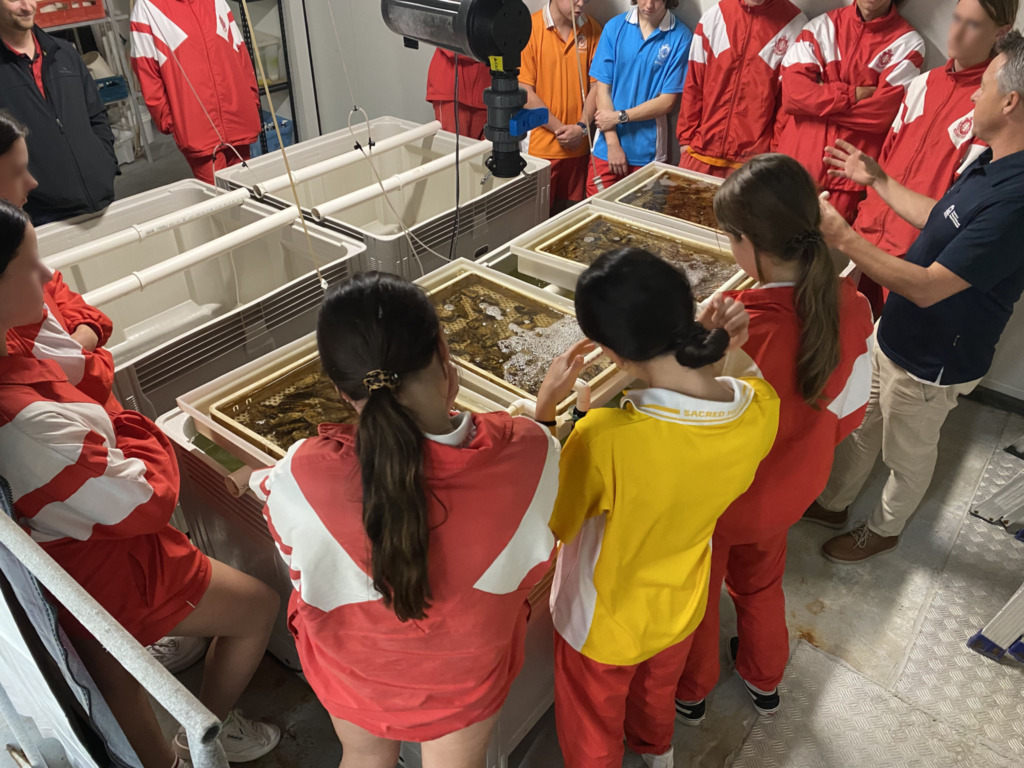In this activity, students learn about the benefits and limitations of aquaculture as a farming technique. Students will also learn about Western Australia’s key aquaculture species, the types of aquaculture systems used across the state, and the practiced used to manage the organisms in these systems.

Duration: 1.5 hours
Aquaculture is the farming of aquatic organisms such as marine and freshwater fish, shellfish, aquatic plants, and algae, in controlled aquatic environments. It is the aquatic equivalent of agriculture but involves freshwater, estuarine or marine plants, algae, and animals instead of land-based crops and livestock. Aquaculture has been an area of development in recent decades as an option to meeting the protein needs of the global population alongside commercial fishing, which is the harvesting of wild fish.
The Department of Primary Industries and Regional Development (DPIRD) uses aquaculture as part of its aim to sustainably meet the needs of Western Australians while also conserving the state’s resources and environments. In this excursion, students will learn about what aquaculture is and how the Department uses aquaculture to support food production and restocking programs in Western Australia.
This excursion includes three distinct components: an introduction to Western Australian aquaculture presentation, laboratory activities and (when possible*) a guided tour of our Hillarys aquaculture facility.
* Please note that at times, the aquaculture facility tour will be unavailable due to quarantine and/or potential safety hazards.
In the Aquaculture 101 presentation students will learn:
- What aquaculture is.
- The advantages and limitations of aquaculture as a method of food production.
- Key aquaculture species in Western Australia.
- Different types of aquaculture systems (intensive or extensive).
- The three general stages of production within an aquaculture facility (hatchery, nursery, grow out) and what happens at each stage.
- The three key components that must be managed in every aquaculture system (water quality, feed, grading) and their importance to cost- and time-effective aquaculture.
The laboratory activities include:
- Microalgae and feed: Students will examine a couple species of microalgae grown in our Hillarys aquaculture laboratory to feed shellfish bloodstock under a microscope. Students will also use the field of view (FOV) to estimate the cell sizes of the algae species.
- Grading: Students will grade a simulated stock of bivalve organisms. During this process, they will collect counts and weights of a sample at each size to calculate the stock density, or the total number of individuals.
- Water quality: Students will follow sample methodology to test the pH, ammonia, salinity and temperature of fresh and oceanic water samples.
Tour of the DPIRD Hillarys aquaculture facility (*when available):
Students will be taken on a guided tour of the aquaculture facility at Hillarys. This facility is primarily a shellfish hatchery and research laboratory. Students will be shown the facility’s shellfish brood stock, water storage and water quality maintenance mechanisms, and systems for growing feed (microalgae). Your tour guide will explain the phases of aquaculture carried out at the Hillarys facility and explain the purpose of breeding of each species, as some species are intended for re-seeding populations, some are intended for commercial grow-out, and others will be used for further research.
Cost $8.00 per student
Pre-excursion and post-excursion resources:
You may wish to familiarise students with aquaculture and the aquaculture industries in Western Australia prior to your excursion with the related resources below.
While the Hillarys facility specialises in saltwater aquaculture, you can explore one of DPIRD’s freshwater aquaculture facilities using Poster: Restocking trout.
